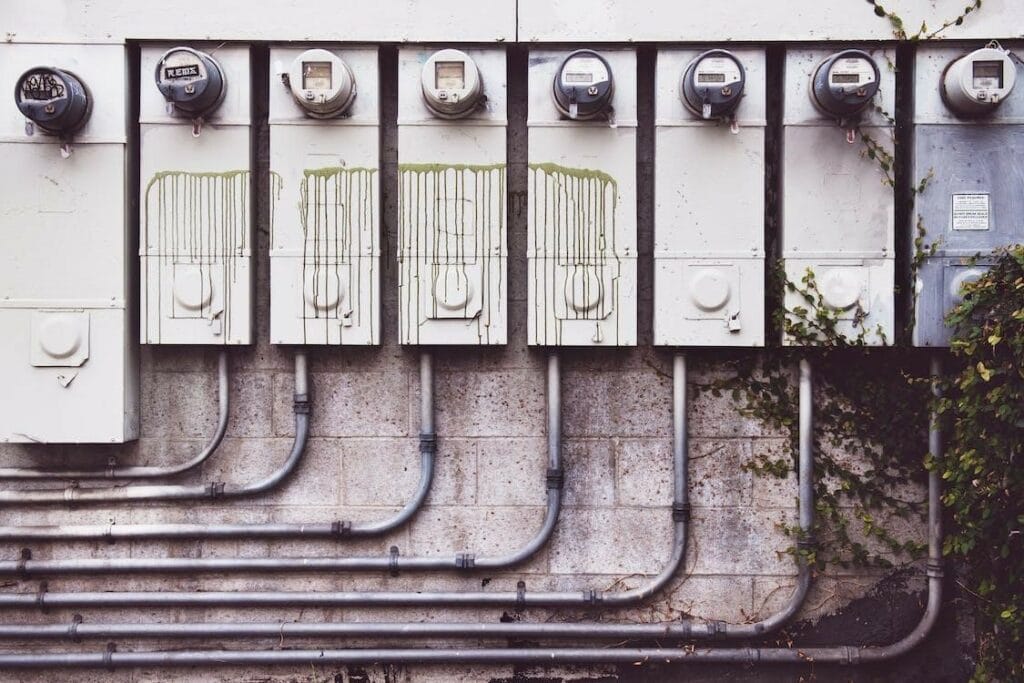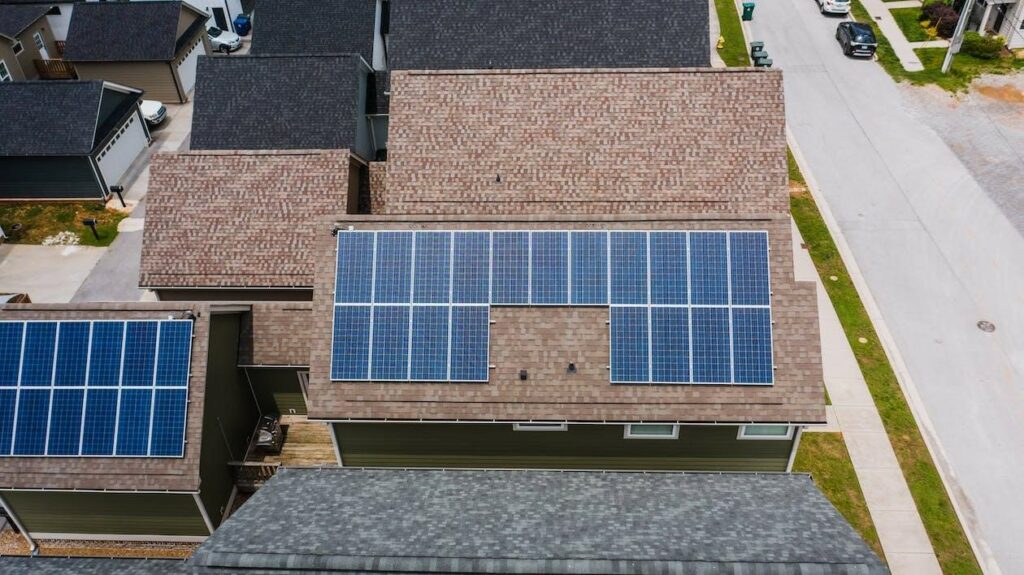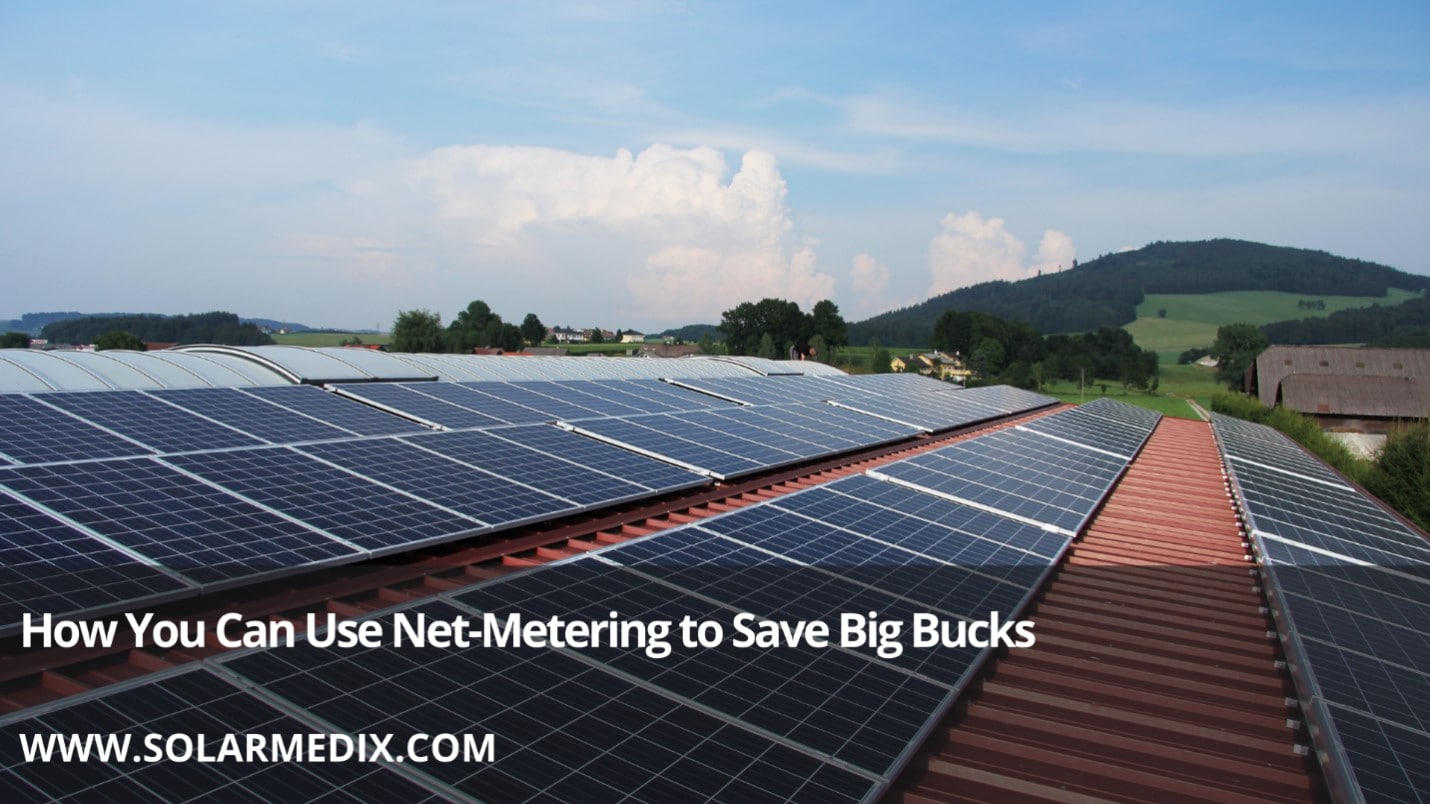Net-metering is an energy concept that has been on the rise lately with the mass adoption of solar panels across New Jersey. By signing up for net metering, you can sell any excess electricity you generate with your solar panels back to your utility company at a price near the retail rate. This translates to more significant savings and a reduction in the monthly electricity bill for most homeowners.
Here, we will go over how net-metering works and its benefits.
What Is Net-Metering and How Does It Work?
Net-metering is a system that allows you to get credit on your power bill for any excess solar electricity you produce. It is a great opportunity for people who want to invest in solar panels—it can save money on electricity and is also nice for the environment.
Net-metering programs may sound complicated, but the basic idea is that if you have a system of solar panels that produces more energy than your household uses, then your electric company will credit you for any extra kilowatt hours that the panels produce. On the flip side, if you use more energy than your home solar panels have, your utility will charge you for the electricity you use minus what your panels produce.
To make this more concrete, let us look at an example.
If your panels produce 20 kilowatt hours of electricity and your household only uses 15 kilowatts, then the five extra kilowatts will offset the cost of your power bill. If you are only producing 10 kilowatts while using 15 kilowatts, then you will pay the difference between those numbers at the end of each month.
Although net metering in New Jersey can be implemented in several different ways, most electric companies make net-metered customers pay a fee for the privilege of selling their excess power back to the electric company. This arrangement incentivizes people to buy renewable energy systems, like solar panels, that do not cost anything to operate or maintain. The payback period for these systems—the time it takes to recoup their initial cost—is usually less than ten years.
3 Steps to Successfully Net Meter Your Home

The following steps will help you get started with net metering:
1. Connect Your Solar Panels to Utility Grid
The first step in net metering is for the utility company to install a bi-directional meter between your home and the utility grid. This meter can measure both electricity flowing out of your house as well as electricity flowing into your house. It has two separate readouts, one for each direction of electricity flow.
2. Set Up the Electric Billing Schedule
Next, set up an electric billing schedule so that you can be compensated for the electricity generated by your solar panels. Your utility company may have a special billing plan for net metering customers, or they may allow you to choose from one of their standard plans.
3. Export Excess Solar Energy to Grid and Earn from It
Once you have set up your net meter and the billing schedule, you will be ready to export excess solar energy from your panels back into the grid. You can also earn extra money by selling excess energy back to your utility company when the grid goes into peak demand mode. This occurs when there is more demand for electricity than supply, and all available power sources are being maxed out.
Net Metering: Why It’s a Great Investment
Net-metering programs benefit everyone, including solar customers and utilities alike. Here are six of the biggest net-metering benefits:
1. Lower Utility Bills
Net-metering in New Jersey allows you to use your solar electricity instead of purchasing it from the utility company. This results in lower bills for customers who generate their solar power.
2. No Extra Equipment
You do not need to purchase or install any special equipment to take advantage of net-metering benefits. Your existing solar panels will work fine, be they residential or commercial. However, commercial net metering programs are more complicated than residential ones, often requiring more time and money upfront.
3. Revenue
With net metering, you are paid for every kilowatt hour (kWh) of electricity your solar array generates above what you use at home or business. This means that if you produce more electricity than you use in a given month, the utility company pays you for that difference.
SREC Option
SRECs, or Solar Renewable Energy Credits, are credits issued by a utility company in exchange for the generation of renewable solar energy. The SREC represents the solar portion of the generated electricity and is sold independently from the electricity itself. An SREC’s worth is set by supply and demand in the marketplace. Typically, one megawatt-hour of solar electricity produces one SREC. Energy providers with a solar RPS obligation and requiring SRECs can buy them from other providers.
Whether you choose to get compensated for your solar energy surplus through a net meter or an SREC is a critical consideration. The dividend or distribution may be different, but both are great monetary incentives for creating renewable energy.
4. Increased Property Value
Net-metering allows customers to generate their electricity and use it on-site without paying for the cost of transmission and distribution. This makes homes with solar panels more desirable and increases their resale value.
5. Self-Sufficiency

Net-metering allows homeowners to meet their own energy needs with their solar power generation. It means you will never have to worry about rising energy costs because your home is powered entirely by clean, renewable energy from the sun.
6. Environment-Friendly
Net-metering helps reduce pollution by:
- Reducing fossil fuel use when your solar panel generates more electricity than you need at home or business.
- Reducing global warming emissions because solar panels produce no air pollutants or greenhouse gases such as carbon dioxide (CO2) and nitrous oxide (NOx).
- Avoiding the cost of building new power plants, transmission lines, and substations needed to meet additional demand from customers who could not generate their electricity using clean energy sources like wind and solar power.
Things to Ensure When You Are Opting for Net-Metering for Solar Panels
Net-metering is a great way for homeowners to consider installing solar panels to determine how much they will save on their monthly electric bill. However, there are some considerations and requirements for net metering in New Jersey that should be kept in mind when opting for this system.
Read Your Local Utility Company’s Net-Metering Policy
You first need to find out if a net-metering program is available in your area and what the requirements are for getting it set up. You can usually do this by contacting your local utility company and asking about their net-metering policy around solar energy.
Typically, utilities will allow you to install a certain number of panels on your property, but there may be restrictions on where those panels can be placed. Some companies will only allow you to use net metering if all of your panels are installed at one location, while others will allow you to spread them out across multiple properties as long as they are connected to a single meter.
Know How Much You Are Getting Paid
Knowing how much your utility company is paying you for the energy your solar panels produce is important. This will help you decide if net metering makes sense for your situation or not.
Some companies will pay customers a fixed rate per kilowatt hour of electricity they produce, while others will give them credit for their monthly bill. Either way, it is important to understand how much you are being paid to make an informed decision about whether or not net metering is right for you.
Check Your Local Codes and Permits
Before you begin installing solar panels on your home, it is important to check with your local building department about any permits or inspections that may be required. In many cases, installing solar panels in New York will require a permit from your city government before you can even begin work on the project.
Ensure That Your Solar Panels Are Grid-Tied
Grid-tied solar panels are designed for specific use: to connect to your home’s electrical grid. If you want to be able to sell extra power back to the grid or keep it for yourself, then you will need to purchase grid-tied solar panels that are specially designed for net metering. These panels have inverters built into them that automatically switch between charging and discharging electricity depending on how much power they are receiving from the sun or sending back out into the grid.
Ensure That Your Meter Can Accommodate a Two-Way Flow of Power
When you set up net metering for your solar panels, you create a two-way power flow between your home and the utility company. This means that the electric meter on your property will spin in both directions.
The amount of power flowing in each direction depends on how much energy your solar panels generate at any given time and how much electricity you use at home. If your panels generate more electricity than you need, the excess energy will flow back into the grid and be used by other customers on the same utility network. Conversely, if your household needs more electricity than it produces, it will draw power from the grid to meet those needs.
For this system to work properly, it is important that your meter can accommodate a two-way flow of power to record incoming and outgoing electricity usage accurately. If the meter cannot measure both ways of power flow, you would have an imbalance between incoming and outgoing power — which could lead to problems with getting paid by your utility company or potentially facing fines or penalties from them.
Therefore, if the meter is not accommodating two-way flow and not spinning in both directions, you will need to contact your local utility company and request an upgrade of your meter. Once this has been completed, you can rest assured that everything is working as planned.
Look for Homeowner Insurance Policies
In addition to the aforementioned concerns and requirements for net metering, you should also check out homeowners’ solar panel’s insurance. This is to ensure that if someone damages your solar panels by accident or on purpose, it is possible that you could be held liable for their damage.
However, some homeowner’s insurance policies are starting to offer more comprehensive coverage for solar panels and other renewable energy sources. If your home has been equipped with net metering for its solar panels, you should ensure that your homeowner’s insurance policy covers them in case of damage.
Final Words
Your biggest barrier could be the upfront cost of installing a solar system. But do not let that deter you from pursuing this goal. Instead, consider how you can save on installation costs with a home-equity line of credit—it makes it easy to jump into renewable energy. With net metering, you can reduce your electric bills by producing your own electricity. With the potential to save money on power each month, it is easier to swallow those upfront costs when you know you will see them shrink over time.
Got questions? Looking for guidance?
Our company has serviced the New York and New Jersey areas for the past two decades in solar panel repair and maintenance. We can provide you with the guidance you need. You can reach us at 732-785-4814 or book a consultation online.













